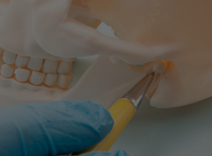Bone grafts for dental implants become essential if you have an inadequate bone in a part of your jaw where jawbone deterioration has occurred and needs additional support. The bone for the grafting may be obtained from a part of your body for surgical infusion into the existing bone in the jaw. Occasionally synthetic bone also helps with a dental bone graft.
Dental bone grafts become a requirement when procedures like dental implants are planned or if bone loss is affecting the health of the nearby teeth and gums. This article talks about how dental bone grafts function, the procedure, and the results you can expect. Kindly continue reading for more information.
The Purpose of Performing a Dental Bone Graft
You may require a dental bone graft to replace missing teeth if you want dental implants near you. Implants are fake tooth roots shaped like screws placed into your jawbone. A dental crown matching the neighboring teeth is mounted atop the implant after you recover. However, if you don’t have adequate jawbone, you become ineligible to receive dental implants making it a requirement for you to receive a dental graft. Bone grafts help provide a stable base for the implant, and nearly 50 percent of people receiving implants need bone grafting before the procedure.
Bone grafting also becomes necessary if a part of your jaw is affected by jawbone deterioration resulting from tooth loss or gum disease. Jawbone deterioration affects the neighboring teeth and gum tissue, and bone grafts help stabilize the jaw to prevent further decline besides the long-term complications associated.
Bone grafting also helps people affected by bone loss by improving their appearance because the loss of bone can make a face appear shorter. Bone loss is familiar among the elderly because of the risk of developing osteoporosis, a bone-thinning condition. However, people of any age with an injury to the jaw or experiencing problems with poor dental hygiene may need bone grafting.
The Bone Grafting Procedure
Bone grafting procedures are performed differently, but the fundamentals remain the same. The dentist near you offering dental implants makes incisions in a jaw and attaches bone material to it. Dental bone grafts are performed if you have lost one or more permanent teeth and are affected by gum disease.
Dentists prefer using bone from your hip, tibia, or the rear of the jaw. The procedure is called an autograft considered the gold standard because it increases jaw bony support to promote speedy healing and new bone regeneration.
A typical dental bone graft proceeds after you receive anesthesia before your operation. The dentist will clean the affected area, and the surgeon will make incisions in your gums to separate them from the bone needing the grafting. Next, the bone material for the procedure is placed between two sections of bone to help them grow together. Finally, the graft is secured by dissolvable sutures for healing.
Dentists may also perform an allograft using bone from a donor or cadaver, xenografts using animal bone, and alloplasts using synthetic material like calcium phosphate or sodium phosphosilicate. Studies conducted in 2019 didn’t determine the appropriate reconstruction material for bone graft but revealed promising material using cells, gene-modifying drugs, and growth factors are on the horizon.
How Uncomfortable Are Bone Grafts?
A dental bone graft that doesn’t require harvesting bone from your body is relatively minor. You remain sedated, ensuring you feel no pain until the anesthesia wears off. After that, the pain is tolerable with over-the-counter or prescription pain relievers for a few days. You may experience discomfort from the bone grafting procedure before scheduling your appointment for dental implants in Smithtown, NY, to replace your missing teeth. However, the pain can increase, making your recovery more painful if the bone was harvested from your body because the surgery proceeds in two locations.
Preparing for a Dental Bone Graft
Preparation is not required before receiving a dental bone graft. However, it helps if you skip eating for eight to 12 hours before your surgery, depending on the anesthesia you will receive. In addition, you can inquire with your oral surgeon about the medications you use, specifically blood thinners that can increase the risk of bleeding during surgery. You must arrange transportation to get home after the procedure because you remain exhausted for some time.
Dental bone grafts help prevent long-term health issues associated with tooth loss and periodontal disease, besides helping augment bone to support dental implants. The procedure is relatively safe and tolerated well by most patients, although some risks and complications are associated. Nevertheless, if you follow your dentist’s instructions during recovery, you help minimize the chances of problems developing and enhance your odds of maintaining good oral health years later.
Suppose you consider dental implants for replacing missing teeth but have insufficient jawbone; Joseph B Pantaleo DDS can help you augment bone in your jaw by performing a dental bone graft. Consult them today to schedule your appointment for the procedure to receive dental implants as soon as you recover.































